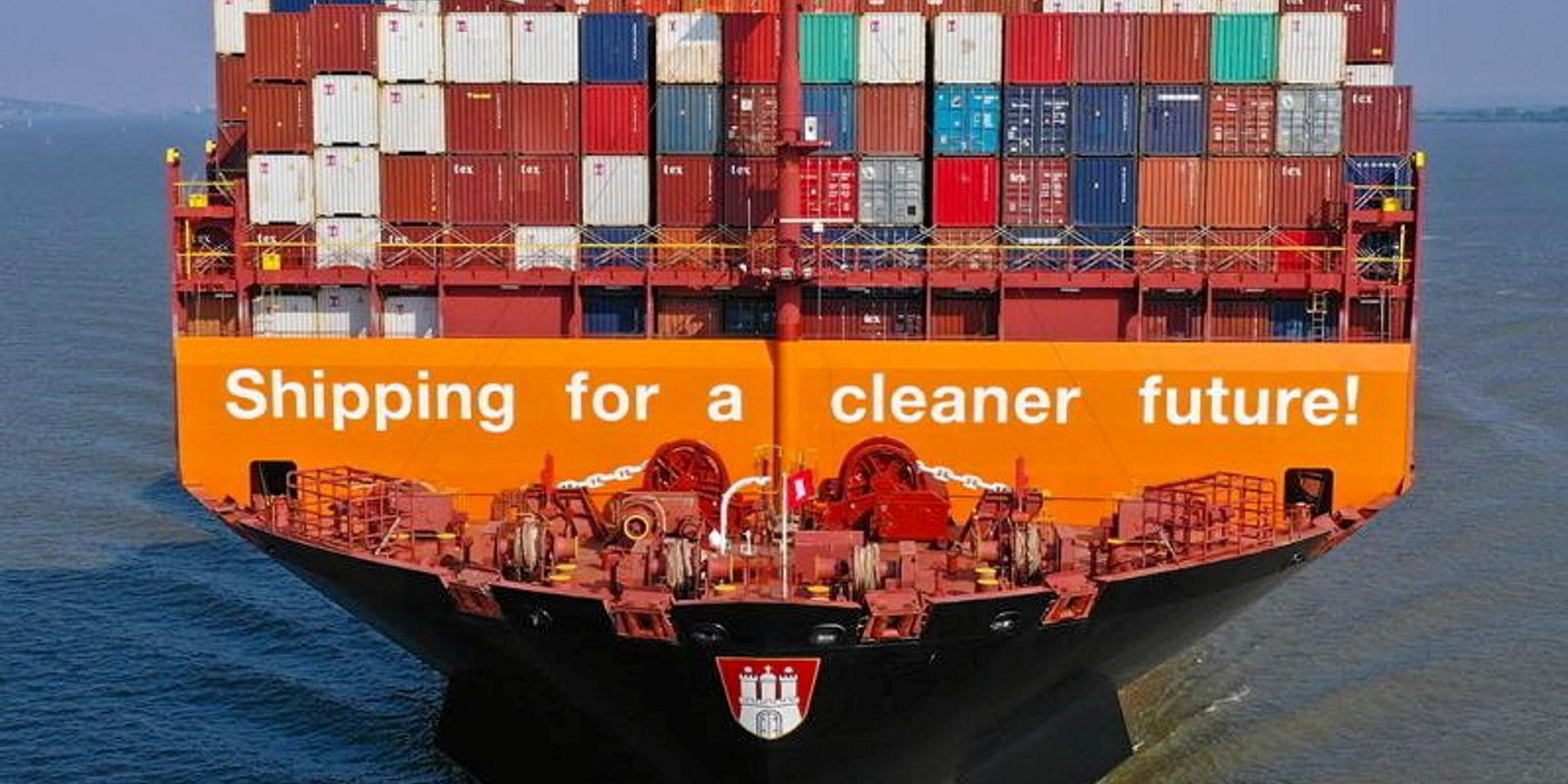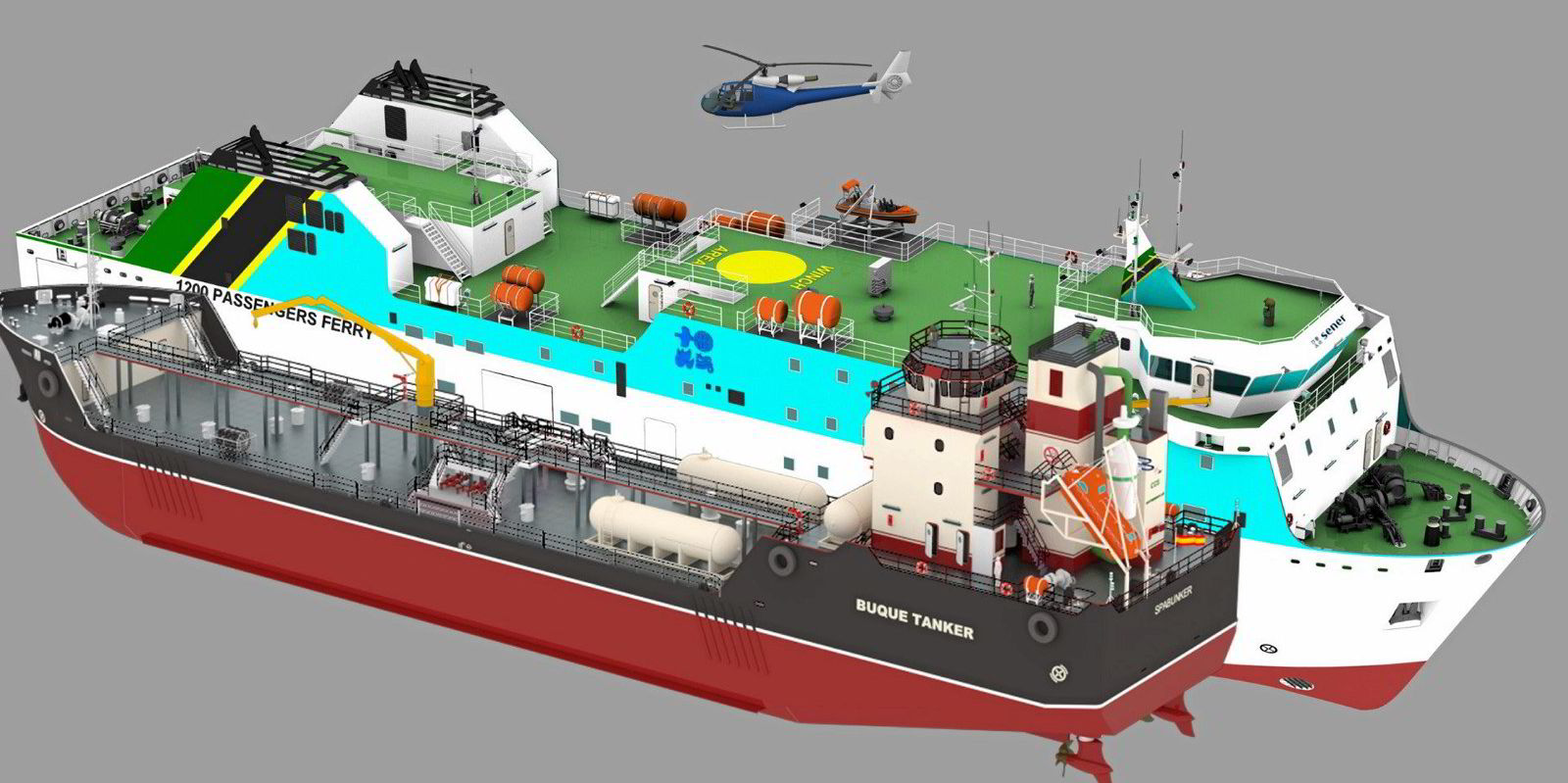Germany’s Hapag-Lloyd is seeking to advance its decarbonisation goals by rolling out a product based on biofuel.
But early reaction to the scheme suggests the jury is undecided on whether shippers will pay for the costs of going green.
Chief executive Rolf Habben Jansen believes his company has taken a leap of faith by procuring significant biofuel supplies.
The world’s fifth-largest liner operator expects shippers will bite on a biofuel product called ‘Ship Green’ that allows them to avoid carbon emissions.
“So far, the uptake has been okay-ish,” Habben Jansen told a webinar this week.
“But whereas we had hoped that the product would be sold out very quickly, that is not yet the case.”
The Hamburg-based company launched Ship Green in May to offer shippers emission-free sea transport using biofuel.
Shippers are offered different levels of avoidance in carbon dioxide equivalent (CO2e) emissions: 100%, 50% or 25% of their shipment’s ocean-leg CO2e emissions.
Whether initial reluctance by shippers to buy into biofuels scheme is a case of marketing — or a deep-rooted reluctance to pay up — remains unclear.
Do the right thing
Feedback from the market is that the German liner giant “is doing the right thing”, says Henrik Schilling, Hapag-Lloyd's managing director for global commercial development.
But to convert that into bookings means finding what makes shippers tick and establishing who is making the decisions.
“This is what we have to find out and this is the journey we have to embark upon,” Schilling said.
Answers to such questions are deemed important if Hapag-Lloyd is to hit its decarbonisation goal.
The company is seeking to reduce its Scope 1 carbon emissions by 30% by 2030 and to be carbon neutral by 2045.
Reaction to the biofuel produced will help establish the extent to which price is a factor.
Biofuel is notably more expensive than conventional fuels, with Ship Green coming in around $350 to $400 more expensive per teu. The longer route to Asia-Europe route might be in excess of $300 per teu more expensive, while short-haul routes only $50 per teu more.
But Schilling says that the liner giant is not trying to earn a margin on the price spread between the different fuels.
The price is based on the delta spread between Marine Fuel Oil (MFO) and biodiesels, based on an index-linked calculation.
Hapag-Lloyd last year bought 120,000 tonnes of biofuels, comprising used cooking oil.
But the idea is to ramp up supplies as shippers commit to more of the biofuel product, said Michael Behmerburg, director of green fuels.
“This year we have bought already 100,000 tonnes, so we are going to increase it,” he said.
The volumes are not enormous, given that a single large containership on the Asia-Europe run might consume around 3000 to 4000 tonnes of conventional fuel.
But the expectation is that the volumes will pick up once the first rollout stage is completed.
“Overall our fleet has 4m tonnes of bunker, so we have room to grow, and want to grow,” Schilling added.
Hurdles overcome
One thing holding back use of biofuels on Hapag-Lloyd ships in the past had been obtaining regulatory issues.
Permission was needed from class societies, engine makers, flag states and charterers to use biofuel.
But the company has made progress there and now has over half of its fleet of 250 vessels approved to operate on biofuel.
“We are working on a daily basis to improve the number of vessels which are approved and operating on biofuel,” said Behmerburg.
He added that the company recognises that biofuel will not be the ultimate solution in the energy transition.
Scaling up of biofuel will be “challenging” given that significant quantities will be required by road transport and aviation, he said.
“There’s roughly seven-to-nine million tonnes of used cooking oil available worldwide. So biofuel will bring us one step forward, but it’s not really scalable,” he said.
But establishing whether shippers are ready to pay could be a litmus test of how serious shippers are about decarbonisation.
Schilling suggests that could mean the difference between talking about decarbonisation for sustainability reports — or taking concrete steps that really make a difference.
“In the end, if this is the price of decarbonisation and nobody’s willing to pay for it, then this is the lesson we would take out of it,” he concluded.






